Citroen C5 2nd gen 2008-2017 - Used car, experiences, failures
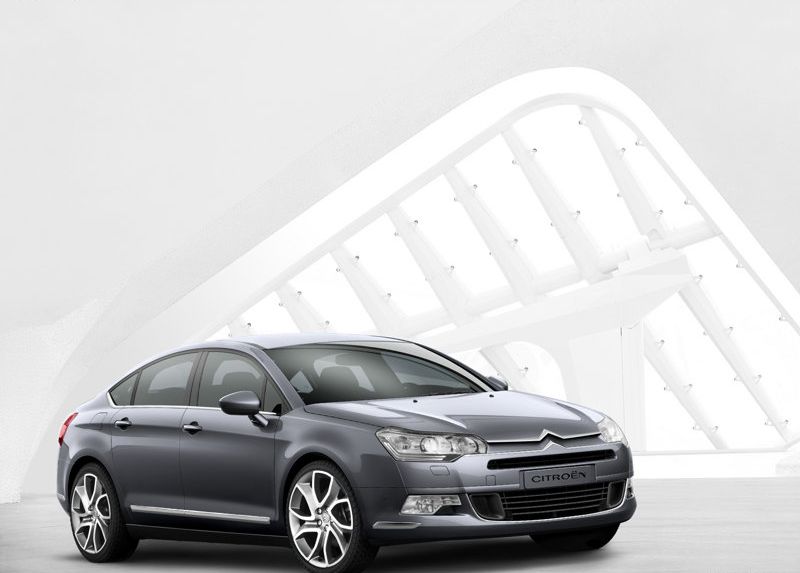
Citroen C5 2nd gen
Year of production: 2008 - 2017
Restailing: 2012
Predecessor: Citroen C5 I.gen
Class: Medium
Competitors: Peugeot 508, Ford Mondeo, Renault Laguna, Audi A4Volvo S60 Alfa Romeo 159
Models: sedan, station wagon
The Citroen C5 2.gen will attract drivers with its design, modern technology, mostly rich equipment, driving comfort and reasonable price. The downside of the Citroen C5 2.gen may include relatively high standard weight, average trunk and…. There are also risks in buying used cars with high mileage, because with the increase in the number of kilometers, there can be more worries than joy.
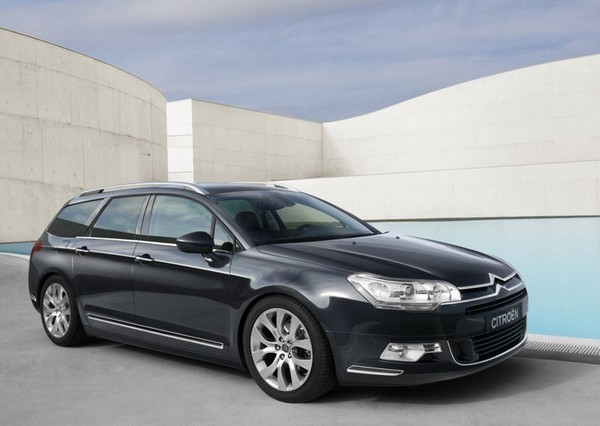
The second-generation Citroen C5 was presented to the public at the 2007 Frankfurt Motor Show. In mid-2012, the C5 underwent minor changes.
The Euro NCAP crash test Citroen C5 2.gen passed in 2008. with 5 stars.
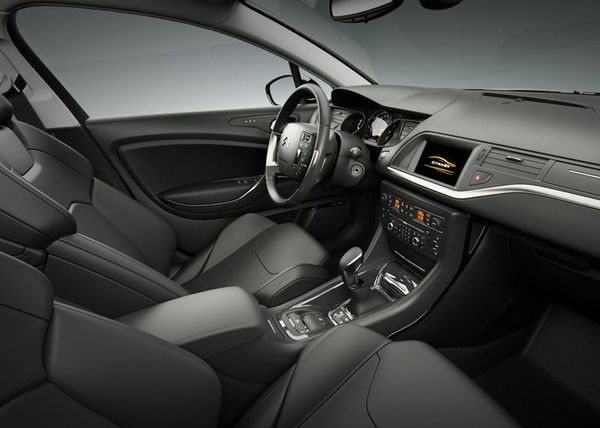
The interior of the Citroen C5 2.gen is worth an impression. The soft plastic used is nice, pleasant to the touch, and the workmanship is solid. Wide armrests are worthy of praise. A little exotic is the steering wheel with a firm center that you have to get used to.
Unlike the previous generation Citroen C5 2.gen., The little space inside is disappointing. Especially, people over 190 cm will feel uncomfortable because there is no place for the head. In this regard, you should consider purchasing a vehicle with a panoramic sunroof, which reduces headroom by a few inches. On the back, the supply of headroom is similar, but in the case of wagons it is better because the roof does not descend so intensely. The knee seats at the rear are only average and in this regard the C5 stands behind the competition but also behind the previous generation.
The average amount of space in the trunk in both versions of the Citroen C5 2.gen. The sedan has 439 liters, the Tourer offers 505 liters, which can be increased by folding the rear seats to 1462 liters. The volume of the trunk is also calculated with a spare tire. In the case of the gluing set, it is increased to 467 liters - limousine and 533 l (1490 l) - station wagon. Enjoy a relatively large entrance in the sedan version.
Strength of Citreon C5 2.gen. is the soundproofing of the interior, especially with the optional side laminated windows.
Citroen C5 2.gen uses two types of suspension. For the cheaper version, a classic coil-spring chassis, designated Mettalique, is reserved. The chassis is tuned for comfort, sharper curves or quick changes of direction, and a leaning to the understeer is also noticeable, especially with larger diesel engines under the hood. It has to be praised for its stability, where the trapezoidal front axle holds the vehicle in the selected driving direction. Good stability also has a quick turn in rapid passage, slight rocking occurs only when passing through more pronounced bumps in the road.
Better options (more comfort and precision chassis) are offered by the hydro-pneumatic suspension carried by the Hydractive III + in the C5 and in the larger C6 model. The hydro-pneumatic suspension works either in automatic mode or you can change the setting at your own discretion. When configuring the comfort mode, the crew enjoys the cruise. Increased impacts on people in the vehicle while driving have larger bulges or larger transverse irregularities.
In the case of fluid leakage from the hydro-pneumatic system, the electronics fix the height of the vehicle to a certain height and allow it to be transported to service. Although there were problems in the first year, overall the system is reliable and without significant investment should last 5 years or 200.000 km. After exceeding this limit, service should be performed.
Engines - Citroen C5 2.gen.
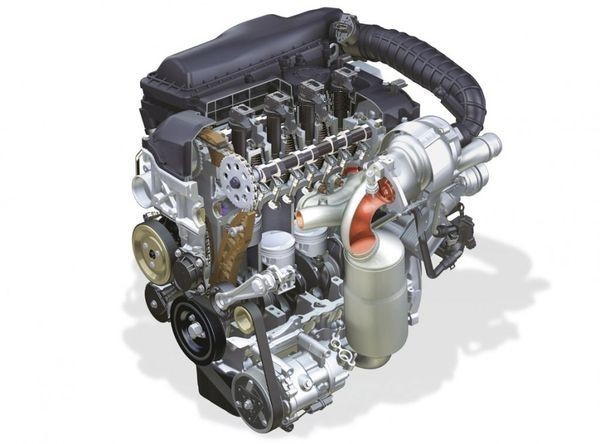
Gasoline engines - Citroen C5 2.gen.
Until the redesign of the Citroen C5 2.gen, the gasoline engine supply was quite diverse. The base is a 1,8-liter 16-cylinder four-cylinder EW with 92 kW power and 170 Nm of torque. For nearly 1,5 tonnes of C5, its dynamics are sufficient for normal driving only, and in search of faster travel, it is necessary to maintain speed in the upper half of the rev. Consumption rarely falls below 8 liters.
More dynamic is the larger 2.0 16V (also EW series) with 103 kW and 200 Nm of torque. For faster driving, this engine also needs to be maintained at higher rpm, which has a negative impact not only on noise but also on consumption. Here the average is between 9-10 liters.
A very interesting unit is the three-liter six-cylinder (2946 cc) with 155 kW of torque and 290 Nm of torque. The cylinder head contains 24 valves with variable valve timing on the suction side. The engine features a cultivated drive, delivers very good dynamics and decent thrust at low speeds, and will enjoy the acceleration sound at higher RPMs. It has an active exhaust muffler that is split into two chambers, the exhaust inlet being controlled via a damper based on the speed and load of the engine. Occasionally, the control of the aforementioned flap will stop, so you can enjoy the sporty sound even at low revs. Due to its performance, consumption is relatively acceptable and can be maintained between 10 and 11 liters in quieter driving. The engine also boasts good reliability, only occasionally bobbin problems can occur, resulting in uneven operation.
Following the redesign of the Citroen C5 2.gen, there are only two 1.6 VTi petrol engines (88 kW) and a turbo version 1.6 hp (Turbo High Pressure) with 115 kW. Both units have an aluminum block and engine head, variable intake and exhaust valve opening times, and variable intake valve stroke.
The 1,6-liter VTi engine delivers 88 kW at 6000 rpm and 160 Nm of torque at 4250 rpm. However, 90% of maximum torque is available in the range of 2500 to 5750 rpm. Combined with the heavy Citroen C5, however, the driving dynamics are only average. For faster acceleration, for example, it is necessary to maintain higher speeds when overtaking. Consumption averages about 7,5 liters, and more 1-1,5 liters is more common when driving on the highway.
The 1.6-liter turbocharged THP engine has no variable valve stroke, on the other hand it is equipped with a direct fuel injection that allows a relatively high compression ratio of 10.5: 1. It also has a twin-type water-cooled turbocharger and its pressure is electronically limited to 0,8 , 115 bars. This turbocharger makes better use of the pulsations in the traction force because the exhaust gases from the first and fourth cylinders are supplied to the turbine separately from the exhaust pipes of the second and third cylinders. The turbocharger cooling circuit is supplemented by an electric pump that operates for some time even after the engine is switched off, causing the turbocharger to cool and protect. Maximum engine power is 5800 kW at 240 rpm and torque of 1400 Nm between 4000 and 8 rpm. Driving dynamics are satisfying, acceleration is smooth across a wide range of speeds, but with lower peak performance. Consumption is about 10 liters in normal use, increasing high-speed consumption to more than XNUMX liters.
Both engines (1.6 VTi, and 1.6 THP in particular) may seem like a good choice in terms of driving performance, unfortunately, but they have reliability issues
.
Diesel engine - Citroen C5 2.gen.
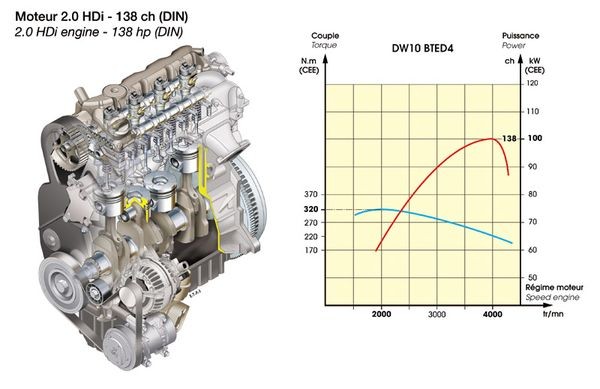
When it comes to diesel engines, the most successful construction is the 2-liter engine, but the drive unit hardware malfunctions from time to time. If you don't mind a bit more power consumption and like fast driving, then the ideal solution is the 3.0 HDI. Unfortunately, finding such a mate is a little more difficult.
1,6 HDi 16V
The choices are really different. The base is an aluminum generator with a 1.6 HDi 16V series DV6, which reaches 80 kW and a torque of 240 Nm. Contains turbocharger with variable blade geometry and overboost function, increasing turbocharger pressure and torque of 20 Nm. It is characterized by cultivated driving, continuous increase in low-speed thrust and consumption, which averages around 5,5-6 liters. In terms of driving dynamics, this engine is for smoother driving, with a less dynamic feel, especially when more loaded or accelerated at higher speeds.
Despite its economical operation, this engine is quite problematic because with higher mileage the risk of various problems is significantly increased. From oil leaks on the valve cover, which is usually resolved by re-sealing. The greater the number of kilometers (not more than 100.000), various mechanical failures in much greater numbers can occur. The main reason for these problems is prematurely soiled oil.
Impractically shaped oil pan where the drain hole / screw is placed above the bottom of the crankcase. In practice, such a solution allows the deposition of dirt from the oil, which is not cleaned even when replacing the oil. The new oil becomes loaded with dirt deposits from the bottom of the crankcase and adversely affects the life of various engine parts. First, a turbocharger is usually taken. Ducts, pipes or clogged sieves, which are inserted between the lubrication channel and the supply pipe, do not allow the turbocharger bearings to be sufficiently lubricated. They are overheated, so that they accumulate other soot deposits, which significantly reduces their life. To correct this problem, it is recommended that these parts be cleaned or replaced periodically.
Dirty oil affects other engine parts as well as clogged hydraulic valve lifters, oil lines, crankshaft bearings or progressively reduced compression. Other disturbances that can occur within a certain number of kilometers include a faulty EGR valve, excessively worn injectors - poor start or more noisy and uneven engine operation, as well as various oil leaks or problems with the vacuum circuit that controls the EGR valve, throttle and turbine. There are also problems with the floating flywheel manifesting, noise during start-up or acceleration and vibrations at idle.
1,6 HDi 8V
As of mid-2010, the new 1.6 HDI appears on the market, achieving a maximum torque of 270 Nm at 1.750 rpm. It reaches 1.500 Nm at 242 rpm. The maximum power of 82 kW reaches 3600 rpm. The engine has been redesigned, which is especially positive in terms of significantly improved reliability. Engine performance has been improved, but in terms of driving dynamics, in practice, the 16-valve version is a bit more active at lower revs, and the newer 8-valve version is livelier in the mid-range. Consumption is similar to the 16V version. A weaker aspect, especially in terms of long-term reliability, is, as with the older version of the 16 valves, a poorly shaped oil pan, which under normal circumstances does not allow a good oil change. Soot and other impurities that settle to the bottom of the crankcase contaminate the new oil, which negatively affects the life of the engine and its components. For longer life, the engine requires more frequent crankcase cleaning.
In the case of the 1,6 HDi version with eight valves, it is useful to mention a few words about the injection system in terms of lifespan and reliability. Unlike the weaker versions known from other models, piezoelectric injectors (weaker solenoids) that are very sensitive to fuel quality are used in the strongest version, and the overall life and reliability are significantly worse than with the solenoid injectors in the weaker versions. In practice, there were cases when the injectors went on new vehicles with several thousand kilometers traveled and had to be replaced. Generally, their service life varies between 150-200.000 km and then they require replacement.
2,0 HDi
Two-liter 2.0 HDi (DV10) with 16-cylinder cylinder head offers more dynamics and better reliability. It has a power of 100 kW (103 kW) and a torque of 320 Nm with 340 Nm of overload. After the upgrade, the power was increased to 120 kW and the torque to 340 Nm. In a heavy Citroen C5 2.gen. (1.7 t), the engine's dynamics are a little damp, but it is sufficient for normal driving and, compared to the weaker 1.6 HDi, offers significantly more power, especially when the vehicle is loaded and accelerated when overtaking. Consumption averages about 6,5 to 7 liters, and the machine is about a liter more.
2,2 HDi
Another diesel engine is the 2.2 kW four-cylinder 12 HDi biturbo (DV125) and the torque of 370 Nm. It includes a 16-valve head, a pair of camshafts, a third-generation common-rail Bosch injection with piezo injectors, and air inlet for two fixed-geometry turbochargers. The smaller turbine runs at idle speed, the larger turbo activates in parallel between 2600 and 3200 rpm, depending on engine load and atmospheric conditions. As the small turbo has lower inertia, the engine responds to throttle even at lower rpm, increasing torque is smooth and will allow good engine flexibility over a wide rpm range. The average consumption is about 7-7,5 liters.
After upgrading in 2010, the 2.2 HDi has a power of 150 kW and a torque of 450 Nm. After the new air intake, only one turbocharger with variable stator blade geometry is taken care of, so the engine characteristics have changed slightly. At lower rpm, there is a significant delay in the start of the turbocharger, which means that it is less ready for more aggressive acceleration than its predecessor with the two turbines. Consumption with a manual transmission is about 7 liters.
2,7 HDi, 3,0 HDi
An interesting choice is the six-cylinder diesel, which is very rare outside the premium class. Up until the modernization, the peak of the diesel offering was a 2.7-liter six-cylinder (DT17). Like smaller units, this was developed in collaboration with Ford. It achieves a power of 150 kW and a torque of 440 Nm. After the upgrade, the 2.7 HDi replaced the new six-cylinder 3.0 HDi with 177 kW and 450 Nm of torque. Both engines work exclusively with the Aisin automatic six-speed gearbox. Both models give the C5 enough dynamics for fast travel, but it must be prepared for more front axle weight, which means more understeer. Just for information, the C5 with a six-cylinder diesel engine is about 200 pounds heavier than the 2.0 HDi, and the weight of the empty vehicle is more than 1.9 tons. For both six-cylinders, the average consumption is about 8 liters.
Technically, the 3.0 HDi comes from its 2.7 HDi predecessor. In addition to increasing the cylinder capacity from 2721 to 2993 cc, the engine also received a more modern generation of common rail injection with a maximum injection pressure of up to 2000 bar (2,7 HDi - 1650 bar). Piezoelectric injectors have eight holes instead of six, and compression from 17.3: 1 to 16.1: 1 is also reduced. For a faster start at low temperatures, the engine got new ceramic heaters. The modernization went through both turbochargers (higher maximum speeds and faster response), where each completes a series of three cylinders with air. Due to stricter emission limits, the 3.0 HDi also got a new EGR valve.
Different types of gearboxes are available. Five (1.8i, 2.0ii and 1.6 HDi) are the most common. a six-speed manual, with fairly accurate starting control and a soft clutch.
Conventional automatic transmissions with hydrodynamic converter are also available, in the case of four-speed petrol 2.0, in other cases six-speed. Automatic gearboxes have a slightly slower operation, also the hydrodynamic converter captures engine dynamics, and on average it has to be reckoned with a consumption of 0,5 to 1 liter larger than a manual transmission. The gearbox, on the other hand, is very soft and impact-free to meet driving comfort.
The 1.6 e-HDi and 1.6 VTi engines were coupled to a BMP6 robotic 6-speed gearbox, with the option of a manual gearbox or lever under the steering wheel. In normal driving, the speed changes are relatively fast and without much jerk. The deterioration of the situation occurs with faster driving, where the transmission has a relatively long (about 1 second) change to the appropriate speed.
Common problems - Citroen C5 2.generations
Citroen C5 2.gen is among the more reliable vehicles, with problems in the first years of production. There are electronic problems (eg incompatible handsfree equipment, alarm problems, tire pressure sensors, parking sensors or accidental vehicle locks, and related central lock failures, etc.). Therefore, it is important to check the functionality of all electrical devices at the time of purchase. The functionality of the air conditioner needs to be checked.
The anti-corrosion protection of the Citroen C5 2.gen is very good, with the varnish it is a bit worse, because many models have damage to the fenders and sills. There are also dimmed lights, and some plastic in the interior is subject to faster wear.
Due to their greater weight, the braking components wear out relatively quickly. Hydro-pneumatic suspension models had problems in the early years with oil leaks from the system. At higher mileage, occasional oil leaks from the transmission or engine and sometimes noisy digerencial.
For EW petrol engines (1.8ii 2.0i) there is occasional oil consumption. In practice, oil consumption varies depending on the model and mileage. The problem may be in the leakage of the valve seals or if the oil consumption is not reduced significantly, the problem is in the assembly for the piston link - premature wear of the fourth cylinder (especially 2.0 and 16V). In the case of the 3.0 V6, the ignition coils fail more often than with other engines, resulting in uneven engine operation (running on fewer cylinders).
With the EP series engines (1.6 VTi and 1.6 THP) there is often a problem with the drive mechanism. Due to the inadequate connection of the camshaft and the pulley (until 2/2010), this connection loosens over time and the deviation of the gears causes a disturbance of the drive mechanism. And there is the problem of low tension of the toothed belt. In addition to higher noise levels, unevenness in the drive mechanism also reveals problems with uneven operation, unwillingness of the engine to pull, or a warning light about engine failure, because a loose belt causes incorrect information to be transmitted from the sensor to the engine control unit. In the event of a malfunction, the belt skips, which means engine failure and, in some cases, engine damage. While in the case of atmospheric VTi problems have been successfully eliminated, and the drive belt must be changed in the case of higher mileage (revised in 2010), in the case of 1,6 THP, the chain's resistance to torsional vibrations is significantly worse and continues to be a weaker engine.
Citroen C5 2nd gen with VTi and THP petrol engines, the variable VVT valve system may fail, which, in addition to the engine failure lamp, is reflected by engine shutdown, weaker power or sudden acceleration. With gasoline engines, there is also a coil failure, the engine runs on fewer cylinders - uneven operation, knocking and the like. The coils can be saved by regular replacement of spark plugs. It is recommended to replace it no later than 50.000 km, and for more frequent driving on shorter distances (after the city), it is recommended to replace the spark plugs at 30.000 km. Occasionally, a malfunction lamp on a gasoline engine reports a faulty lambda probe - a higher risk if the vehicle is driven more frequently on shorter routes.
For 1,6 THP engines, excessive soot deposition occurs over time, especially in the intake and on the intake valves. This is due to the recirculation of gases containing carbon particles, as well as oil mist that penetrates through the intake through the crankcase ventilation system, as well as around the piston rings that have low pressure on the stem for the lowest friction losses. Such oil gases then carbonize and bury the engine soot. In addition to suction and intake valves, soot is also deposited in the combustion chamber. Together with deposits on the intake valves, carbon deposits in the combustion chamber cause detonation combustion. Engine operation gradually heats the soot to a high temperature and causes self-priming of the injected fuel. The detonation combustion detector records these signals and sends a pulse to the control unit, which then reduces the pre-ignition to avoid detonations. The fuel burns and burns later and will not be able to deliver all its energy. The result is gradually smaller and smaller performance and increased consumption. With a long-lasting detonation problem, the pistons burst and the engine is damaged.
For preventative protection, it is recommended to fill high quality fuels with cleaning additives or by mixing various cleaning agents in the fuel. These additives or agents, in addition to cleaning, also reduce adhesion and thus eliminate soot deposition. However, it is important that these fuels are used regularly (best to be poured after every tank, but at least every other third tank), single or short-term use has no more pronounced effect. Sometimes there is a problem with a THP of 1,6 THP with the wrong coolant temperature sensor, which causes the engine to not warm up to operating temperature. Sometimes the whole thermostat does not work with the sensor. In the case of higher mileage, sometimes el. turbocharger (engine) controls fail, resulting in reduced engine power.
It should be added that the modernization of the Euro 5 engine has succeeded in solving some of the shortcomings, problems with the propulsion mechanism or over-production of soot in the case of the compressor version. There is also a coolant leak, mainly on a water pump.
For diesel engines, it is advisable to refill with high quality diesel fuel and change the fuel filter regularly. The greater the amount of impurities contained in the diesel fuel, the fuel filter becomes dirty faster, resulting in less acceleration or loss of tensile strength at higher rpm. More impurities are, of course, a risk even for clogged injectors, leading to a difficult start or malfunction of the engine. Often the injectors can be cleaned professionally, but sometimes cleaning does not help. With more miles, oil leaks can occur, which is often the result of crankcase ventilation leaks.
The older 1.6 HDi 16V 80 kW engine construction has problems with the EGR valve, oil leakage and various problems caused by oil soiled soot - excessively worn pipes, non-functional hydraulic valve lifters, gradual loss of compression, crankshaft bearings. At higher mileage, there are also problems with the vacuum circuit that controls the EGR valve, throttle and turbine.
1.6 HDi (older and upgraded) due to improper oil sump construction, it is not possible to dump all sediment at oil drain, so it is advisable to change the oil more frequently (max. 15.000 km better than 10.000 km) with fresh oil flushing or at least once every 100.000 km) to disassemble and thoroughly clean the crankcase. Otherwise, deposits that remain at the bottom of the crankcase will degrade the new oil content, which has an adverse effect and causes greater wear and tear on the engine and its components.
The 2.0 HDi is characterized by solid reliability, and the EGR problem is the most common, causing poor start, poor acceleration or engine twitch.
At 2.2 HDi, typically over 200.000 km, there are problems with various engine sensors, turbo steering and sometimes a control unit and injection system. More bugs have a poorer version for higher mileage, which uses a combination of two turbochargers.
In the case of the 2.7 HDi, overloaded crankshaft bearings can cause problems in addition to common diesel engine problems.
Higher mileage Citroen C5 2.gen may indicate a problem with the regulation of turbocharger overload - blades (loss of engine power, engine failure lamp ignition) or worn nozzles, resulting in uneven and noisy engine at idle, poor cold start, loss of power (excessive fuel overflow) and the engine switches to safety mode - motor failure lamp. In practice, there are problems with piezoelectric injectors used in 1,6 HDi 8V (Euro 5) motors with a shorter service life and a slightly higher frequency of failure. Attention should also be paid to vibrations, jerks while driving or noise when accelerating from lower revs, which indicates a malfunction of the floating flywheel.
Especially for diesel engines, the fuel filter should be changed regularly. When clogged, the vehicle accelerates less and pulls less at higher revs. Diesel engines are equipped with a particulate filter (FAP), and the service life varies around 200.000 km depending on how the vehicle was used. Sometimes the life of the filter is longer, but sometimes even shorter, especially if shorter runs are more frequent when the filter does not recover well. Filter problems usually occur with the help of an indicator light. switching the engine to safety mode. Approaching the end (clogging) of the FAP filter is usually reported with an increased frequency of regeneration with a slight increase in consumption. Of course, the condition of the engine, injection system and EGR valve is also affected by the life of the DPF.
Used Citroen C5 prices - review
Recommendation of similar texts:

Hi there, I am Mladen and I am an auto enthusiast. I started this blog years ago to help like minded people share information about latest cars, car servicing ideas, used car info, exotic cars, and auto technology. You will find helpful articles and videos on a wide variety of cars - Audi, Mercedes, Toyota, Porsche, Volvo, BMW and much more. Ping us if you have anything cool to share on latest cars or on how to make older cars more efficient, or just want to say hi!


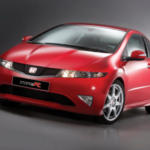
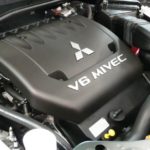

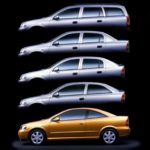
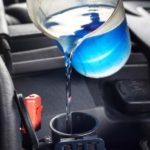
Dear Sirs,
2 months ago I changed my new gear belt set and SKF water pump and now after 2 months it releases my water to the water pump. The whole set is SKF.
Can there be any help what is the reason?
Hopefully soon reply.
Thanks in advance.
Lp
Joseph